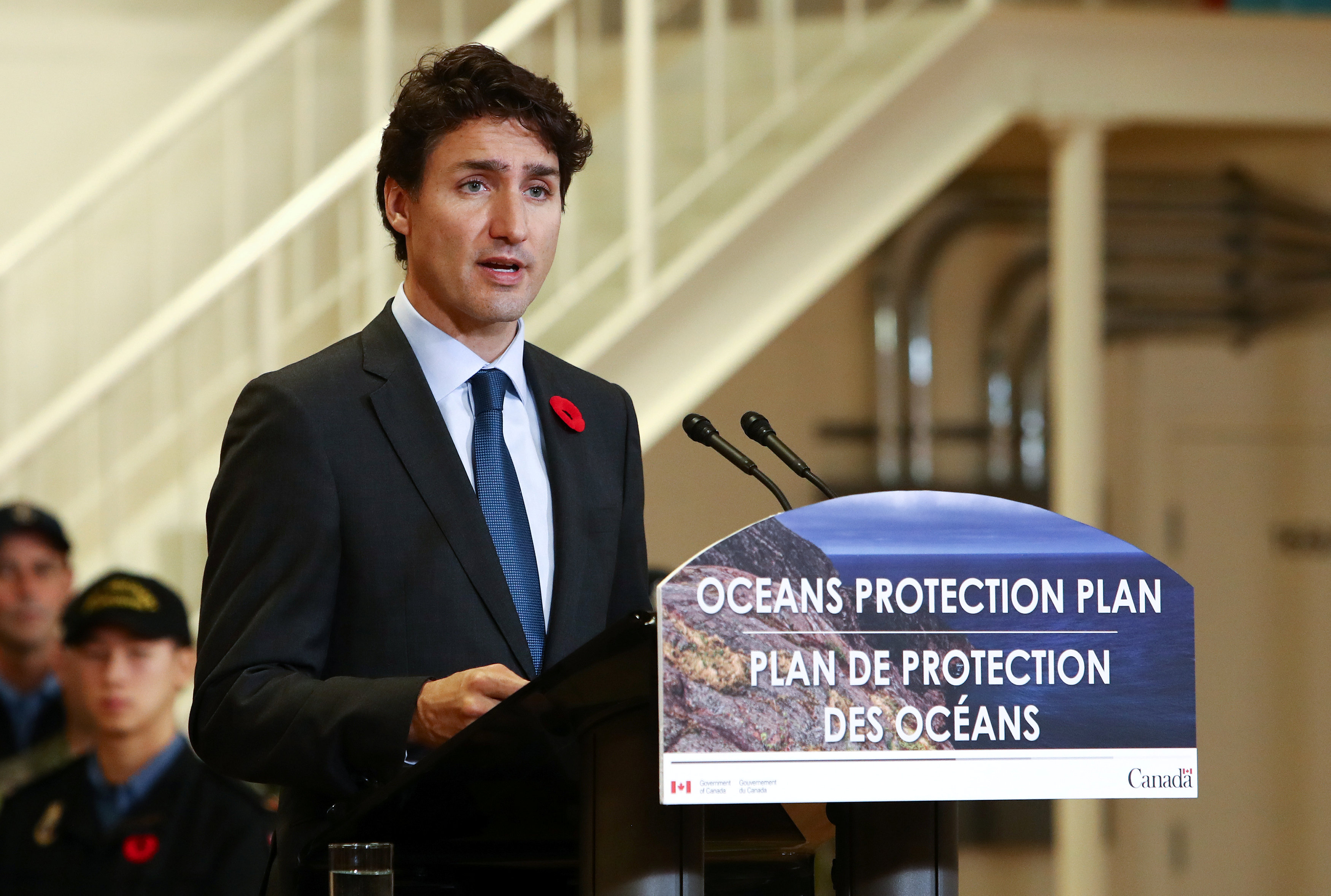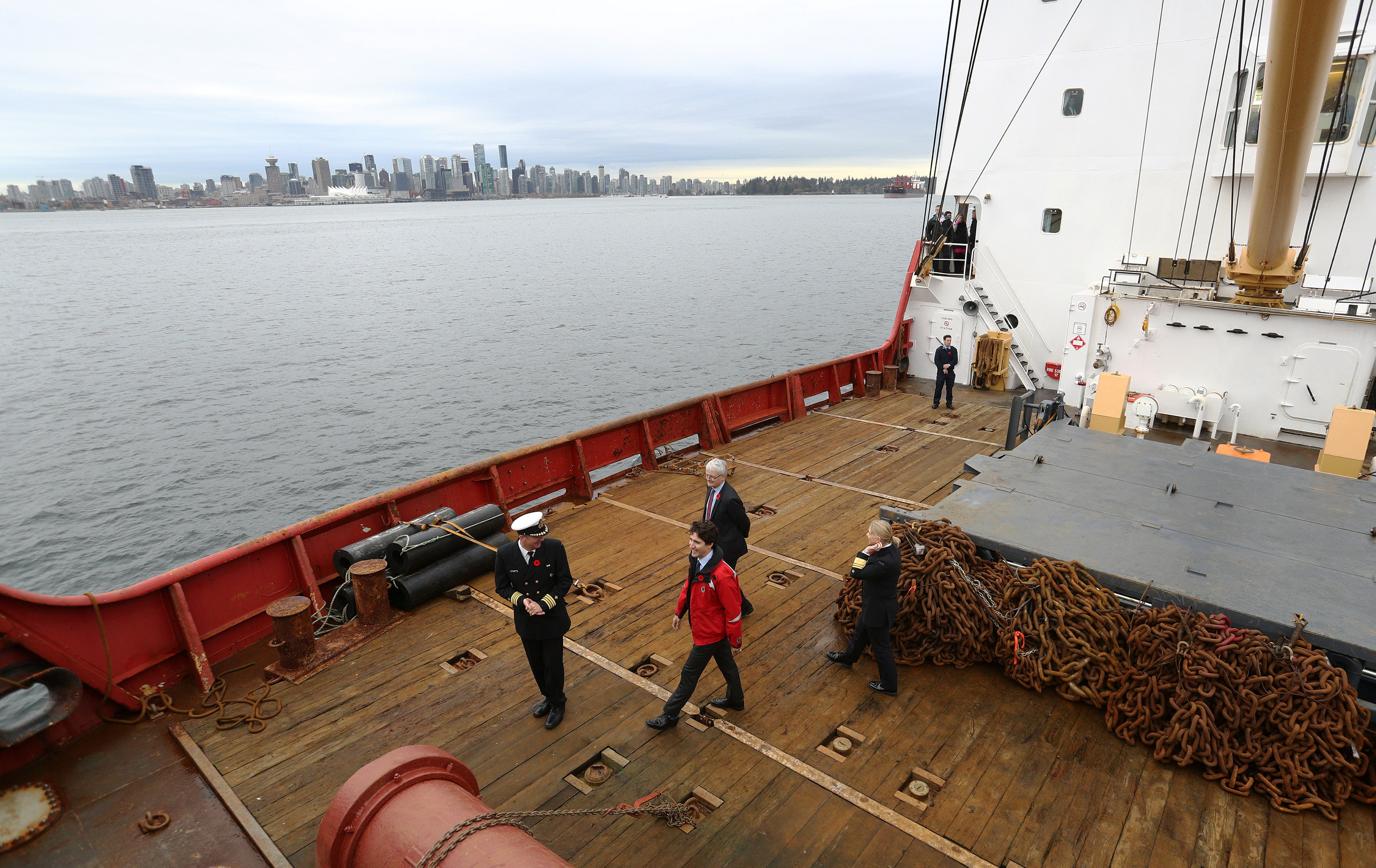Arctic improvements are part of Canada’s $1.5 billion oceans plan
Canada’s new $1.5 billion oceans protections plan, unveiled Nov. 8 by three federal government departments, targets the Arctic, among other coastal regions, for big, overdue improvements in safety, especially in increased protection from oil spills and other marine emergencies.
Calling marine transportation “an essential lifeline” for Canada’s North, the plan, among other goals, seeks to make Arctic resupply operations faster, safer and more efficient for communities.

To that end, the presence of Canadian Coast Guard icebreakers in the Arctic will be extended earlier and later in the season, the plan says.
And a Canadian Coast Guard Auxiliary for the Arctic will be created.
The plan will also create new seasonal rescue boat stations to improve northern search and rescue capacity, and create a seasonal inshore rescue boat station in the Arctic, which it describes as “the very first permanent search and rescue capacity in northern Canada.”
And it calls for eight new community response boats, a backgrounder on the oceans protection plan said.
As well, the oceans protection plan will improve the northern operations of Canada’s national aerial surveillance program because, the backgrounder said, internationally, aerial surveillance is considered the most effective method of detecting oil spills.
“Doing so will improve local marine pollution reporting, search and rescue capacity and satellite monitoring of vessels offshore, which also supports Canadian sovereignty,” it stated.
The oceans protection plan will cost more than $1.5 billion over five years, starting in 2017-18.
As part of the plan, a new marine safety system will also see improved marine traffic and navigation information provided to mariners, Indigenous peoples, and coastal communities.
It will also put money into research into the impacts of increased shipping on marine ecosystems.
The oceans protection plan reflects some of the input from a recent Arctic marine safety review.
The plans also follows a 2014 federal audit, which found major service gaps hamper Canada’s system for ensuring safe marine transportation in the Arctic.
That looked at whether key federal departments—Transport Canada, Environment Canada and Fisheries and Oceans Canada (including the Canadian Coast Guard and the Canadian Hydrographic Service)—adequately support safe marine navigation in Canadian Arctic waters.
The answer was a clear “no.”

The report also found that no federal department had developed a coordinated strategy aimed at improving marine safety in the Arctic.
And it came down particularly hard on Canada’s aging and inadequate fleet of Canadian Coast Guard icebreakers, which are usually looked on to provide help for search and rescue operations, environmental response, aids to navigation, fisheries enforcement and science in Canada’s Arctic waters.
It also determined that many higher-risk navigation areas of the Canadian Arctic remain inadequately surveyed and charted.
Seabed mapping data was “nonexistent” or “inadequate,” with only about one per cent of these waters surveyed to modern standards and only 25 percent of charts “good.”
The report concluded that while “the existing surveillance and monitoring mechanisms are generally adequate to the current context of marine activities in the Canadian Arctic” some areas need further improvement.
Prime Minister Justin Trudeau suggested the new plan will change that.
“The $1.5 billion Oceans Protection Plan unveiled today will make Canada a world-leader in marine safety and takes a powerful step toward co-management of our coasts with Indigenous and coastal communities, together making sure they remain healthy, clean, and safe for generations to come,” Trudeau said in a Nov. 7 government release on the plan.